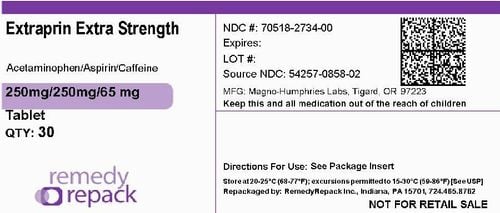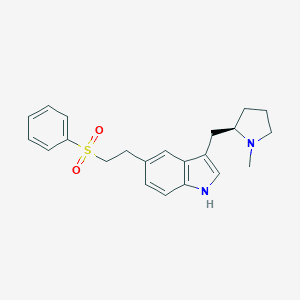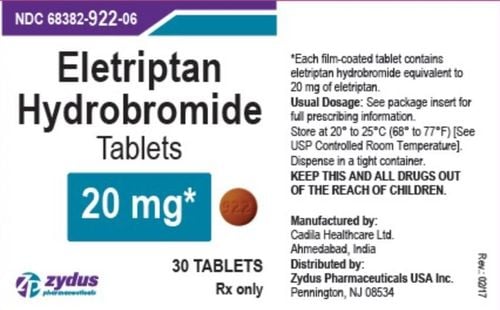This is an automatically translated article.
The headache medicine Zomig is used to relieve migraine headaches, accompanied by nausea and sensitivity to light caused by blood vessel constriction. To ensure effective use, users need to strictly follow the instructions of the doctor, professional pharmacist.1. What is Zomig?
What is Zomig? Zomig medicine has the main ingredient Zolmitriptan 2.5 mg, which is prepared in the form of film-coated tablets. Zolmitriptan is a medicine that works against headaches caused by narrowing of blood vessels around the brain. Zolmitriptan may also reduce substances in the body that can cause headaches, nausea, sensitivity to light and sound, and other migraine symptoms.
Zomig is commonly used to treat migraines. It is used for headache symptoms, but is not used to prevent headaches or reduce the number of attacks.
2. Indications and contraindications of Zomig
Indications:
Zolmitriptan is indicated for the relief of migraine headaches accompanied by nausea and photosensitivity.
Contraindications:
The drug should not be used to treat other types of headaches, but not migraines. For example, common tension headaches. Do not use if the patient is sensitive to Zolmitriptan or the excipients of the drug. Patients with coronary ischemia, other cardiovascular diseases, coronary artery spasm, including Prinzmetal's angina. Wolff-Parkinson-White (WPW) syndrome or arrhythmia associated with cardiac conduction disturbances. Patients with a history of stroke or transient ischemic attack (TIA), hemiplegia or migraine with hemiplegia are at increased risk of stroke. Patients with peripheral vascular disease (PVD). Ischemic bowel disease. Uncontrolled hypertension. In the past 24 hours you have used a 5-HT1 agonist, an ergotamine-containing medicine, an ergot derivative (such as dihydroergotamine or methysergide). Concomitant use or within 2 weeks of discontinuation of MAO inhibitors. It should not be used even by people with a history of smoking addiction or those taking nicotine-based substitutes without prior cardiac examination. Particular attention must be paid to postmenopausal women and men over 40 years of age with such risk factors.
3. How to use and dose Zomig
How to use: Zomig is taken orally. The patient should take the medicine with plenty of water.
Dosage:
Adults:
Initial dose: Take 1.25 mg / time and twice a day or take 2.5 mg / time, repeat the dose in 2 hours if the migraine is not relieved. or recurrent migraine. Recommended dose: Orally at a dose of 1.25 mg to 2.5 mg / time, repeat this dose within 2 hours if migraine has not improved. Maximum single dose: Do not use more than 5 mg/time. The maximum dose administered within 24 hours is not more than 10 mg. Children: The safety and effectiveness of Zolmitriptan have not been established in patients under 12 years of age.
4. Side effects of the drug Zomig
Side effects of drugs are generally transient. Adverse effects that have been reported after using zomig include:
Common: Abnormalities or sensory disturbances; dizzy; headache; unconscious; paresthesias; sleepy; palpitations ; digestive disorders such as abdominal pain, nausea, vomiting; Dry mouth, difficulty swallowing; muscle weakness or pain; debilitated body; tightness, pain, or feeling of pressure in the throat, neck, limbs, or chest. Uncommon: See tachycardia; Mild hypertension; Transient hypertension ; polyuria; increased frequency of urination. Rare: Hypersensitivity reactions including urticaria, angioedema and possibly anaphylaxis. Very rare: Myocardial infarction ; Angina pain; coronary spasm; causes ischemia or possibly intestinal ischemia appearing as bloody diarrhea or abdominal pain; urinary retention. Instructions on how to deal with side effects: Discontinue use with mild adverse reactions, usually requiring only discontinuation of the drug. In case of severe hypersensitivity or allergic reaction, supportive treatment in hospital should be instituted. Inform your doctor about any unwanted effects you experience while using Zomig
5. Precautions when using Zomig
Before treating headache in adults with undiagnosed migraine or diagnosed but with atypical symptoms, a thorough examination is essential to rule out potential neurological problems. get heavy. Care should be taken when treating patients with migraine because there is a high risk of stroke or transient ischemic attack. After taking the medicine you may have temporary symptoms such as chest pain, a feeling of chest compression spreading to the throat, which can be thought of as angina. You must not take an extra dose and seek medical attention right away. Rare cases of serotonin syndrome with altered mental status, autonomic manifestations and neuromuscular disturbances have been reported following co-administration with a selective inhibitor of relapse. absorption of serotonin and zolmitriptan. With close monitoring of the patient, a 5-HT1 agonist should not be combined with Zolmitriptan. Elderly people may be more sensitive to side effects, especially high blood pressure and heart problems. Dose selection in the elderly requires caution, usually starting at the lowest end of the dose range. The medicine may cause dizziness or drowsiness. Zomig should be used with extreme caution when driving and operating machinery. There are no adequate and well-controlled studies in pregnant women. Therefore, Zolmitriptan should only be used during pregnancy when absolutely necessary. Lactation: It is not known whether Zolmitriptan is excreted in human milk. Therefore, you should decide to stop breastfeeding or stop taking the drug. Interactions of Zomig with other drugs:
Zolmitriptan directly stimulates serotonin receptors on nerves. Serotonin reuptake inhibitors (SSRIs) used to treat depression such as fluoxetin, paroxetin, and sertraline potentiate the effects of serotonin by preventing nerve reuptake. Therefore, the combination of zolmitriptan and an SSRI may potentiate the effects of serotonin. Ergot substances such as dihydroergotamine and ergotamine tartrate commonly used to treat migraine headaches can cause blood vessel constriction. The combination of ergot and zolmitriptan may increase the risk of excessive vasospasm. Therefore, zolmitriptan and ergot should not be administered more than 24 hours apart. Concomitant administration of cimetidine may result in a doubling of blood concentrations of zolmitriptan, by interfering with its excretion. This may lead to a risk of zolmitriptan toxicity. Zomig should only be used when indicated and the risk to the patient has been eliminated. When taking the drug, if there is any abnormality, you should immediately notify your doctor for advice.
Follow Vinmec International General Hospital website to get more health, nutrition and beauty information to protect the health of yourself and your loved ones in your family.
Please dial HOTLINE for more information or register for an appointment HERE. Download MyVinmec app to make appointments faster and to manage your bookings easily.













